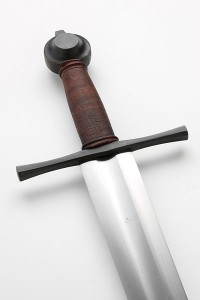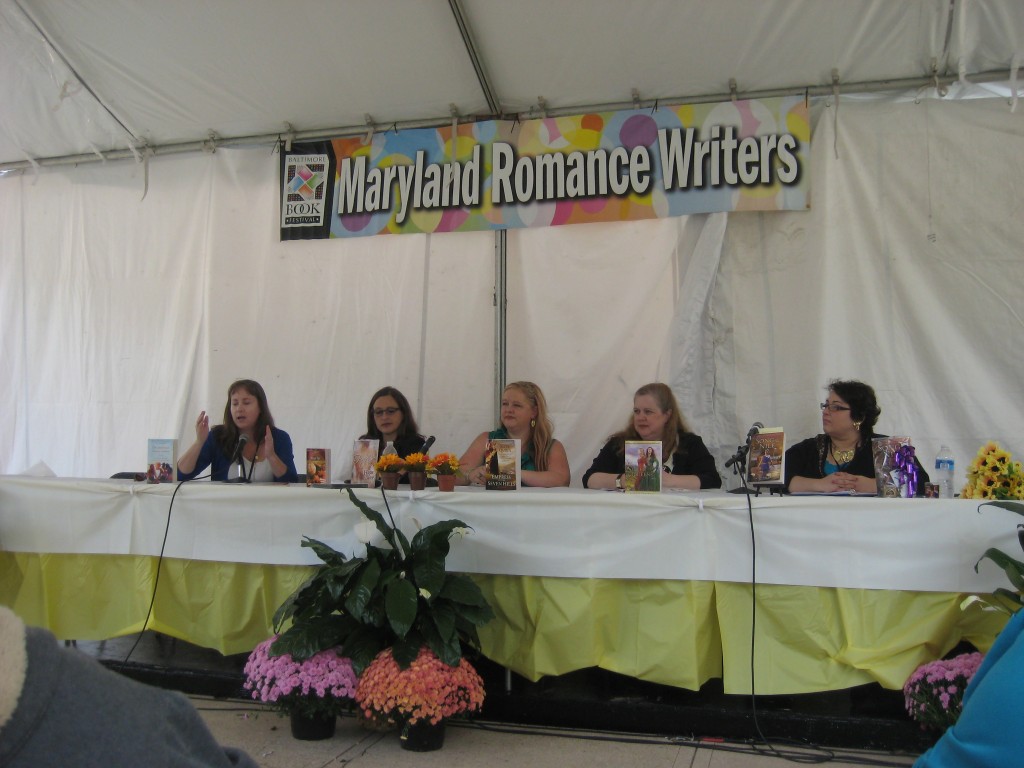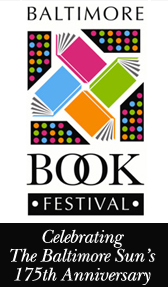Category: For Historical Fiction Fans
And Then There Were Ten. . .
The Sister Queens just made its TENTH “best of 2012” list thanks to Kayla at the Historical Fiction Examiner. Make sure to check out Kayla’s entire Top 10— lots of great books to add to your TBR pile there. My debut is listed with novels by so many authors I truly admire including, Michelle Moran, Juliet Grey, Elizabeth Loupas and Susan Higginbotham.
Must admit it feels overwhelming to make see my book alongside the work of so many luminaries of the genre. This time I am actually one-of-ten with Philippa Gregory. Weird. But weird in a good way!
A “Wrap Up” of Places you Can Win Books (Including Mine) This Season
Nine days until Christmas, have you finished shopping? Well, never mind that. Have you entered all these SUPER holiday book giveaways? There is no time to waste, many of these giveaways are ending shortly.
1) The Historical Holiday Blog Hop at Passages to the Past – This is the jackpot! FOUR fantastic prize packages each an overstuffed holiday stocking of super historical fiction titles (and I mean win a prize and take home more than a dozen historical novels). Check it out! The Sister Queens is part of oh-so-impressive “Prize Package #4.”
2) Over at Let Them Read Books you could win ANY historical title of your choice (valued $15 or less) shipped to you wherever you live (yes, this one is international folks). Jenny has some recommendations based on her favorite reads of the year if you are looking for suggestions. 
3) At Tanzinites Castle Full of Books three lucky winners will chose two, gently-read titles each in another historical fiction giveaway.
4) Giveaway number four, at Peeking Between the Pages, has four fantastic historical titles on offer including books by Michelle Moran and yours truly.
5) And finally, if you are looking to step outside of the historical fiction box I have a pair of giveaways for you.
First, the authors of Book Pregnant are celebrating the “book baby” births of 2012 by hosting a giveaway of 2012 debuts. There are fourteen titles to choose from including literary fiction, women’s fiction, YA, historical fiction and more. At the moment there are more books on offer than entries—you have to like those odds.
Second, there is a very nice Books for Christmas giveaway at the blog of author Genevieve Graham featuring ten titles (including mine) across various genres and each with it’s own rafflecopter entry form. When you click the link you will be at the top of a string of posts, make sure to scroll down to see and enter all the contests.
I’ve just given you six excellent reasons to take a break from your baking and wrapping. GET TO IT!
The Sister Queens on a 2012 Top Picks List!
I am very pleased to announce that The Sister Queens is a TOP PICKS of 2012 for historical fiction at Let Them Read Books (and in the august company of CW Gortner and Robin Maxwell no less). See which books made Jenny’s list for historical fiction, historical romance and historical fantasy and enter to WIN a title of your choice as part of the “Historical Holiday Blog Hop”.
A Sneak Peek Into THE SISTER QUEENS and a Chance to Have It for a Stocking Stuffer
As I mentioned in my last post, the marvelous Genevieve Graham is running a “Books for Christmas” promotion all month to introduce you to ten author’s whose books would make brilliant holiday gifts. She’s even offering you a chance to win their books to slip into the stockings of someone you love (or to install on your own bedside table as the case may be).
Today it’s my turn. Since you’re here at my blog I presume you’ve already met me (*waves cheerfully*). But if you haven’t read The Sister Queens yet here is your chance to have a sneak peek inside the book and meet Marguerite of Provence, Queen of France, on her WEDDING NIGHT! In addition, there is a chance for you to win the entire book for yourself or—if you’ve already read it (bless you)—to give as a holiday gift to a historical fiction lover on your list. When you arrive at Genevieve’s promotion page if I am not at the top of the post just scroll down — I am the December 7th feature.
Just a thought . . . books make GREAT stocking stuffers!
A Murder Mystery from the Era of The Sister Queens
Saw this article today and thought many here might enjoy it. Researchers in western England have found the body of a 13th century knight who killed by a single sword blow to the back. They speculate he was Geoffrey Dutton a prominent local. How he received the mortal wound “that may have left him alive for several hours, yet unable to walk” is uncertain. I see a book plot in there somewhere. What do you think? 
Three Ways to Win WITHOUT Wearing a Hairshirt
As my anniversary blog-tour continues I’ve dropped in at A Chick Who Reads to talk about a scratchy but fascinating subject—the hair-shirt and its place in medieval regimes of self-mortification. But even if you are neither a devotee of hair-shirts as Louis IX of France was nor intrigued by them as I have been since childhood there’s good reason to check out my post. Chick is hosting a giveaway, one of THREE currently on-going. 
Yep at the present moment there are THREE copies of The Sister Queens up for grabs in the blog-o-sphere. Besides Chick’s giveaway (which ends on October 19th), In the Hammock Blog is running a giveaway ending October 21st and Teddy Rose at So Many Precious Books So Little Time is hosting one that ends on October 25th. So spread the word to friends who’ve been waiting to read The Sister Queens until the time is right. That moment is now and with three chances to win their copy may be free. No hair-shirt necessary to win.
Couldn’t Make It to the Baltimore Book Festival—Never Fear, Post Festival Blogging Is Here
As many of you know I was a presenting author at the recent Baltimore Book Festival. This gave me a chance to participate in a number of compelling author panels, two of which have now led to blog posts. So if you weren’t able to make it to Charm City, here’s your chance to read about the discussions you missed.
Reinventing yourself as an author? You can read my thoughts on why it is vital to find the guts to admit you want your writing to be more than a hobby at Book Pregnant where I’ve posted a discussion of “Finding the Courage to Write” based on my panel of the same name.
Fan of historical fiction? If you are a reader or writer of historical novels you may be interested in my guest post today at In the Hammock, where I consider whether Historical Fiction is Women’s Fiction—or more precisely where and why I believe the two genres intersect. This is an issue I’d never given serious thought before being assigned to the “What is Women’s Fiction” panel in Baltimore.
Please stop by either or both blogs and join the discussion!

Countdown to Baltimore
Two more days. That’s ALL! On Friday the Baltimore Book Festival begins and I will be there—meeting and greeting readers in the Maryland Romance Writer’s tent at NOON on Friday (September 28th), then participating in four phenomenal panel discussions over Friday and Saturday. Will YOU be there too? I sure hope so! I will be keeping a sharp eye out and I hope—friends, fellow writers and readers—you will make yourself known with a big hello! Click here for a reminder of my schedule of appearances, festival hours, etc.
Interview with Erika Robuck Author of “Hemmingway’s Girl”
It is my very great pleasure to welcome fellow NAL author Erika Robuck to the blog today for the second in my “Get to Know the Authors I Know” series. Erika’s debut, Hemingway’s Girl released earlier this month.
Set in Key West in 1935, Hemingway’s Girl centers on a young woman named Mariella Bennet who takes a job as a housekeeper for Ernest Hemingway and his second wife, Pauline, in order to support her widowed mother and to realize her own dream of starting a charter fishing boat business. Mariella quickly becomes entangled in the tumultuous world of the rich, their friends, and a marriage doomed for failure. Torn between her infatuation with the writer and relationships with a WW1 vet and a boxer, Mariella soon learns that she may be in over her head on all fronts.
1) Erika, Your book tells the story of Mariella Bennet, a fictional maid hired by Ernest Hemingway’s second wife. Is this book really her story or Papa’s?
Mariella is such a feisty, colorful character, that she stole the show about halfway through my first draft. She has a formidable opponent in Ernest Hemingway, but he never overshadows her.
2) Are you a big Hemingway fan yourself?
I am obsessed with Hemingway, and have been since I was nineteen years old and first read his work, just like my protagonist.
3) Where have you traveled for inspiration and research for Hemingway’s Girl?
My travels began in Key West at his house. I later flew up to Boston to the JFK Museum where 90% of the Hemingway archive is kept. I’m hoping my journey eventually takes me to his grave in Ketchum,Idaho.
4) Truth is often stranger than fiction. During your research for Hemingway’s Girl what was the most unusual or unexpected thing you discovered?
By far, the most unusual and disturbing story I found was of a Key West resident named Count Von Cosel, who faked being a doctor, fell in love with a tuberculosis patient decades his junior, and mourned her death so terribly that he exhumed her body and kept it in his house for years by rebuilding it with wax and preservatives. When the body was discovered, it was put on display for
several days so the residents of Key West could see it, before being returned to a secret grave in the cemetery where she was originally buried. The most bazaar detail about the story is that the residents of Key West thought that what he did was tragically romantic. The Count makes an appearance in Hemingway’s Girl.
 5) Who is your favorite character in Hemingway’s Girl? Who is your least favorite? Why?
5) Who is your favorite character in Hemingway’s Girl? Who is your least favorite? Why?
Wow, that’s a very hard question. My knee jerk response for my favorite was Hemingway, but then it became Mariella, and then Gavin the boxer, and then John the legless WWI veteran. I can’t pick because they are so vividly alive for me, and I love them all. If I had to pick my least favorite, it would have to be Hemingway’s second wife Pauline, who had an affair with Hemingway while he was married to his first wife, but I do have a degree of sympathy for her.
6) Can you share a secret about your book (or the writing of it–something that readers can’t discover from the text itself?
Yes, and my critique partner, Kelly, is going to kill me for this: In the scene where John tells Mariella that his fiancée had sent him a ‘Dear John’ letter in the mail while he fought in WWI, Mariella tells him she’ll bash in the girl’s legs with a bat if he’d like. Those were the exact words Kelly said to me when an agent had strung me along with my first novel and ultimately passed after I
spent thousands of dollars on an editor. It made me laugh so hard that I had to include it.
7) As someone who came to writing as a second career herself I am always interested in how people become writers. How did it come about for you?
In my first life I was an elementary school teacher, but when I had my firstson I left teaching to stay home with him. As his naptimes became regular and lengthy, I finally found time to devote to writing, which I’d done as a hobby
my whole life. It became a wonderful outlet for me that grew and grew until now, when it is a career. I’m very blessed.
8 When you write are you a plotter or a panster?
I’m a definite plantser. I make detailed timelines of historical events, but once I draft, I allow myself freedom with my characters within the confines of historical truth, of course.
9) Which is most likely to spark the idea for an Erika Robuck novel—a time period, a specific event or a character?
A character, usually connected to a location, sparks my ideas. For my first novel, it was a visit to the Caribbean that
set my imagination on overdrive wondering what it would be like to inherit an abandoned, haunted plantation. When I visited Hemingway’s Key West house, I was overwhelmed with ideas for scenes as I walked through each of his rooms. Reading about how much Hemingway hated Zelda Fitzgerald inspired me to learn more about her, and to visit the places in Baltimore where she and F. Scott had been.
10) Authors of historical novels walk a line between known historical facts and fiction. Where do you draw the line on your personal map between accuracy and imagination?
I try to be absolutely true to the time and the events of the subject’s life. Any flexibility I utilize is found in my fictional protagonists’ stories. If I’m aware of any specific inaccuracy or ambiguity, I mention it in a Reader’s Note
11) Do you have a special writing spot—a lair perhaps where you like to do your work? Is there a picture you could share?
I prefer to write at my desk, in my office, surrounded by artifacts, photographs, and posters of Hemingway and Zelda. I listen to classical music while I work, and always have a mug of coffee or tea within reach.
12) If you could read any book again for the first time, what would it be and why?
I would love to read POSSESSION by A. S. Byatt again for the first time. Her novel about scholars researching dead poets and their love affair is written in prose and poetry, in the present and in the past. The poetry is from two different characters and has two distinct styles, and every word has weight. I had assumed they were real poets and real poetry until I found out that Byatt
had created it all. Every last word. I bow to her as the master. Also, the ending was so evocative that I threw the book across the room and cried.
13) What are you working on now?
I’m working on another historical novel featuring the poet, Edna St. Vincent Millay, as a character. Expect scandal, drama, betrayal, and views of the creative process as redemption.
Thank you Erika for those insights into your novel and your writing process! Readers, if you live in the metro-DC area, Erika will be in Arlington, VA at “One More Page Books” for a signing on September 26th (yes, two days from now). I for one plan to be there 🙂
About Erika: Erika is a contributor to popular fiction blog Writer Unboxed and maintains her own historical fiction blog called Muse. She is a member of the Maryland Writer’s Association, The Hemingway Society, and The Historical Novel Society. She spends her time on the East Coast with her husband and three sons. Her next novel, Call Me Zelda, is scheduled to release in 2013. To learn more about Erika visit her website.


